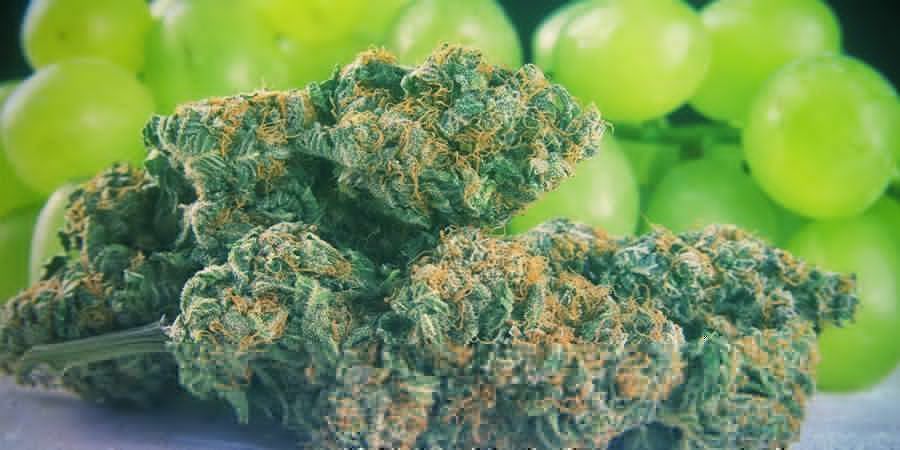
What Are Flavonoids, Terpenes, And Terpenoids?
Cannabis flowers appear simple to the naked eye. Yet, these sticky green nuggets house a secret, complex world. Not only do they contain over 100 cannabinoids, but they manufacture hundreds of terpenes, terpenoids, and flavonoids. Though these molecules exert their own unique effects, they also converge to influence the overall effects of the herb.
The cannabis plant produces hundreds of fascinating phytochemicals. Although cannabinoids occupy the limelight—and for good reason—the herb produces many other molecules worthy of our attention.
Alongside over 100 cannabinoids, weed flowers synthesise over 200 terpenes and numerous terpenoids and flavonoids. Not only do these pharmacologically active compounds produce unique effects of their own, but they work side by side with cannabinoids to underpin the holistic effects of full-spectrum cannabis extracts—a phenomenon known as the entourage effect.
Let’s dive deeper into the nature of these chemicals below. We’ll explore the overarching role these molecules play in the cannabis plant, how they contribute to the effects of the herb, and why they’re so important.
What Is the Function of Flavonoids, Terpenes, and Terpenoids?
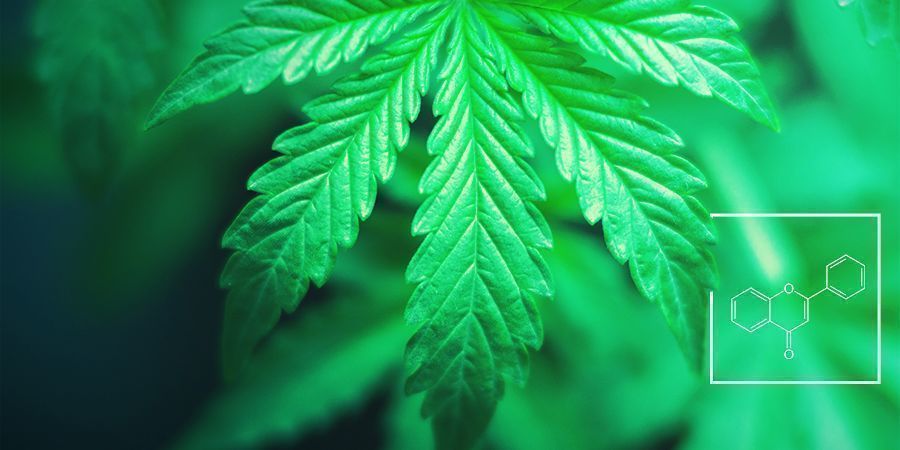
Flavonoids, terpenes, and terpenoids are produced by cannabis plants as secondary metabolites. While not essential for growth, development, or reproduction, these classes of chemicals play an important role in defence, and even communication.
Animals and plants feature drastically different defence mechanisms. Animals have the advantage of movement and running away. Many species possess sharp claws and teeth to fight off threats, and some even shoot spikes and smelly gas from their rear. Being stationary and toothless, plants developed a unique strategy to deter enemies: chemical warfare.
With limited resources at their disposal, plants need a good reason to spend so much time pumping out these chemicals. Simply put, these molecules help them survive. As we’ll uncover further down, all three of these phytochemical categories play an important role, from deterring pests to shielding against intense UV rays.
Although cannabis evolved to synthesise these molecules as an adaptation to an imposed demand, humans have taken to using them for other purposes. Some of them simply smell great, whereas others exert exciting pharmacological properties. Us humans view cannabis as a valuable source of beneficial molecules, and we’ve developed quite the penchant for pot. As we explore these phytochemicals further, we’ll look at exactly how they impact us.
The Difference Between Flavonoids, Terpenes, and Terpenoids

Flavonoids, terpenes, and terpenoids make up the bulk of secondary metabolites produced by cannabis. However, despite being lumped under the same phytochemical umbrella, each plays a unique role, both in nature and in the human body. Continue reading as we break down each chemical family and explore their unique traits.
Flavonoids
Following alkaloids, flavonoids are the second-most abundant class of secondary metabolites in the plant kingdom. The major flavonoids belong to various subcategories, including flavonols and isoflavones. Some flavonoids, such as anthocyanins, serve as pigments that underpin the bright colours displayed by many types of fruits and vegetables—and cannabis.
Generally speaking, the more flavonoids an edible plant produces, the higher its economic value. This increased cost stems from the important role of these molecules in a healthy human diet.
Where Are Flavonoids Found?
Flavonoids are present all throughout the plant kingdom, occurring in numerous tissues and organs. Foods particularly high in these compounds include kale, tea, berries, and grapes. In cannabis, they occur in high concentrations in the leaves, branches, pollen, and flowers.
How Do Flavonoids Work?
Flavonoids play important roles in cannabis physiology. Many of these molecules feature a yellow pigmentation that—when displayed in the petals and leaves—helps to attract pollinating insects. Flavonoids also help to regulate cell cycles, combat fungal pathogens, and mediate relationships between plant roots and beneficial fungi.
Flavonoids also play an important role in the human diet. Through their antioxidant activities, they help to quell the constant barrage of free radical damage inflicted on the human body.
Why Are Flavonoids Important?
Aside from their antioxidant and proposed anti-inflammatory properties, flavonoids are thought to boost general wellness. In particular, certain flavonoids are being probed for their mood and memory-enhancing potential. When it comes to cannabis, those are very desired strain attributes, and it begs the question of how significant a role flavonoids play in the pharmacological effects of a given strain.
The herb produces several well-known flavonoids, including apigenin and quercetin, as well as some unique ones not found elsewhere. For example, cannflavin A resides in the aerial parts of the cannabis plant, particularly in hemp seed sprouts. As research in this area continues to develop, we’ll likely see the identification of more flavonoids and figure out exactly how they fit into the puzzle of full-spectrum extracts and the entourage effect.
Terpenes
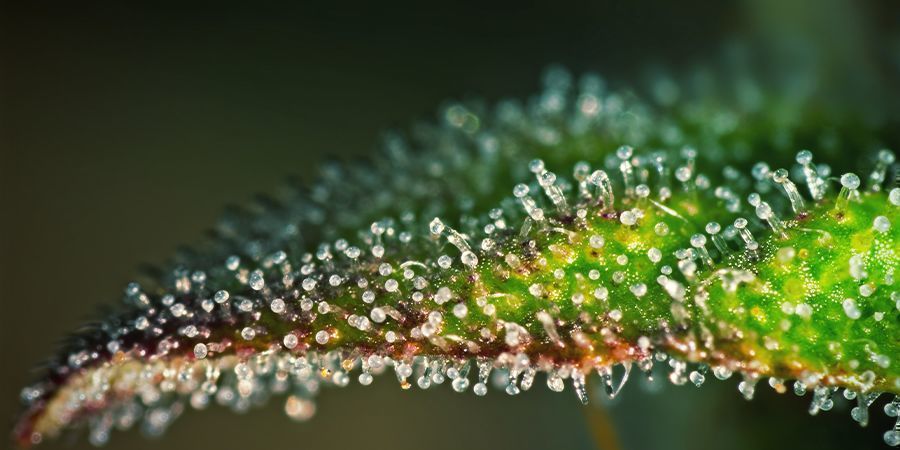
Terpenes are aromatic molecules that underpin the signature scent of cannabis. Every strain features a slightly different terpene profile, which is why Sweet ZZ smells and tastes different than Royal Gorilla, for example. Once thought of as their only role, it turns out terpenes do a lot more than provide attractive odours. These molecules appear to influence the entire cannabis experience, all the way down to the psychotropic effect.
Where Are Terpenes Found?
Terpenes are a dominant class of secondary metabolite found all throughout nature. Over 40,000 of these aromatic molecules give rise to the delightful scents of the world, from pine forests to your favourite fruit. Amazingly, the cannabis plant produces over 200 terpenes of its own. These phytochemicals are found in the viscous resin that coats mature cannabis flowers.
Trichomes—small mushroom-shaped glands that occupy the surface of cannabis leaves and flowers—work hard during the flowering phase to churn out this sticky substance. These crystalline structures manufacture terpenes in specialised cells located between the top of the trichome stem and the bulbous head.
How Do Terpenes Work?
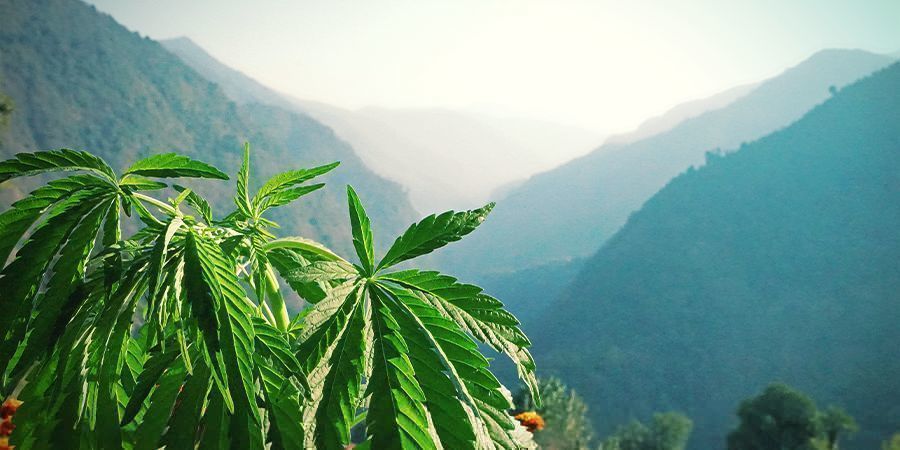
Much like flavonoids, cannabis produces terpenes to help it survive in the wild. If you’ve ever opened up a bottle of essential oil and taken a whiff, you’ll be familiar with just how potent terpenes are. Their intense smell and bitter taste act as a massive turn-off for ravenous insects and herbivores, thereby preventing cannabis plants from becoming lunch and increasing the odds of successful reproduction.
Terpenes also help cannabis plants defend against the climate. The herb ramps up production as external temperatures become threateningly high. Because terpenes are volatile molecules, they evaporate under these conditions, a reaction that stimulates airflow and cools the plant down.
Terpenes produce very different effects in humans. Aside from lighting up your taste buds, they actually work to modify the cannabis high. Sure, THC plays a fundamental role in this experience, but it alone doesn’t explain why different strains produce markedly different effects.
All psychotropic strains possess THC, but each features its own unique terpene profile. Some terpenes, such as myrcene, synergise with THC to produce more of a stoning body high. In contrast, limonene works to promote a cerebral and energising effect. Cannabis scientists refer to this synergistic dance as the entourage effect.
This phenomenon explains why full-spectrum cannabis extracts appear to outperform isolated cannabinoid concentrates in some circumstances. Utilising the array of phytochemicals within each strain may lead to improved outcomes when used holistically.
Why Are Terpenes Important?
Advances in cannabis science have revealed just how important terpenes are when it comes to cannabis phytochemistry. Not only do these molecules entrance the senses, but they also define the character and effects of individual strains. Apart from the holistic entourage effect, plenty of evidence also proves that these chemicals produce profound effects in isolation. The work of cannabis researcher Dr Ethan Russo breaks down the effects of individual terpenes, from the relaxing effects of linalool to the mood-elevating potential of pinene.
Terpenoids
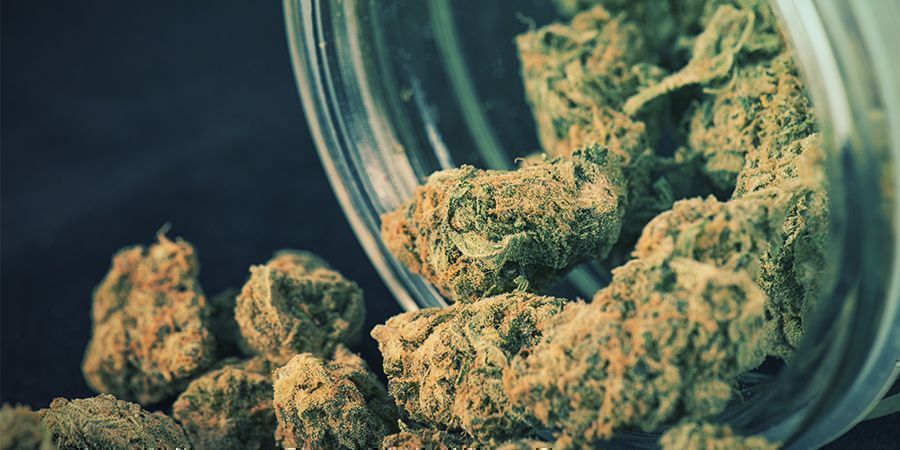
Terpenoids belong to the terpene class, and the two terms are frequently used interchangeably. Whereas terpenes feature a simpler molecule structure, terpenoids are more complex. Some terpenoids are found in higher levels in dried and aged cannabis flowers following a period of oxidation, whereas others are found in the fresh plant. These molecules fall into two main categories: monoterpenoids and sesquiterpenoids.
Where Are Terpenoids Found?
Just like other terpenes, many terpenoids are suspended in a thick resin produced in the heads of trichomes. They play a fundamental role in ensuring plant survival, helping to negate pest attacks and defy fluctuating environmental factors to remain in a state of homeostasis.
How Do Terpenoids Work?
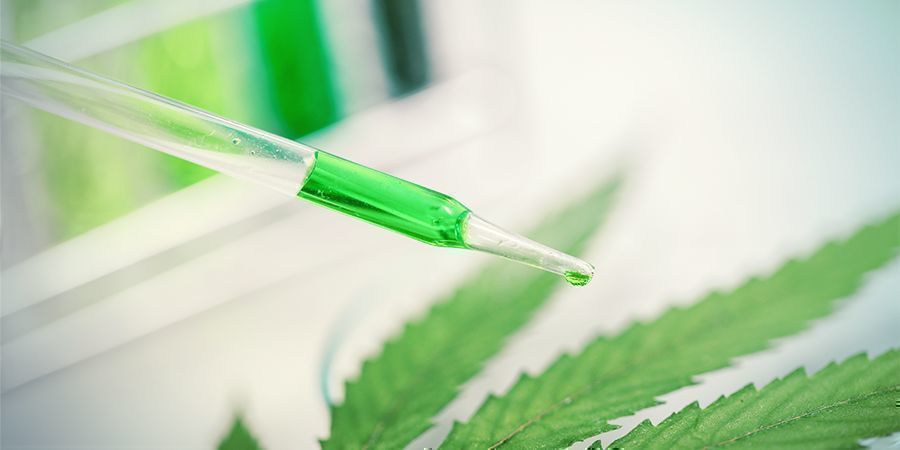
Terpenoids are pharmacologically active and display a wide range of potential in scientific literature. For example, the sesquiterpenoid caryophyllene plays the role of both a terpenoid and a dietary cannabinoid. The molecule binds to the CB2 receptor of the endocannabinoid system and exerts a soothing effect on the body.
Why Are Terpenoids Important?
Much like terpenes, terpenoids play a critical role in the effects of certain cannabis strains. They exert their unique actions via the entourage effect and add a whole new dimension of potential to the holistic applications of cannabis.
How Can You Benefit From Flavonoids, Terpenes, and Terpenoids?
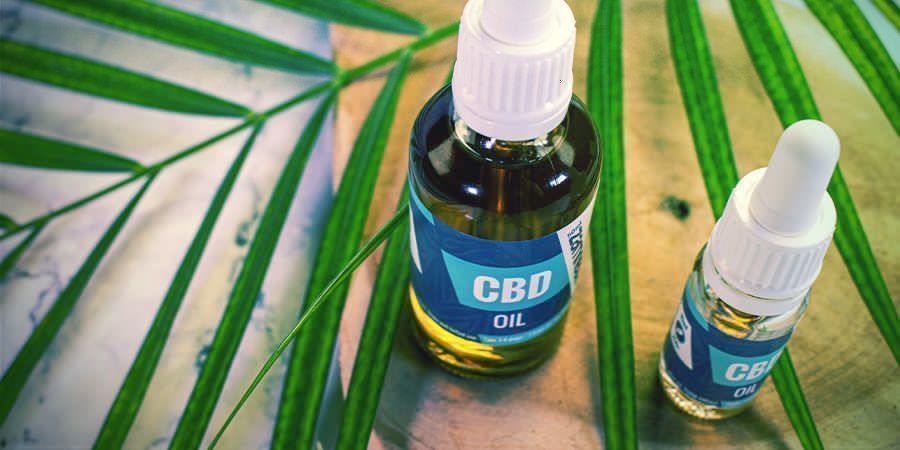
Based on early research, each of these phytochemical classes displays some impressive effects on their own. By opting for full-spectrum cannabis products containing all of these compounds, there’s potential for you to experience even more pronounced effects.
We referenced it earlier, but the entourage effect is a leading theory in cannabis science that posits a synergistic effect between cannabinoids, flavonoids, terpenes, and terpenoids. Although the molecular pathways of each compound, and the significance of their combined effects, have yet to be formally declared, a growing body of scientific literature supports the efficacy of full-spectrum cannabis over isolated cannabinoids.
This theory can be applied to psychotropic extracts as well as CBD oil and other non-psychotropic cannabinoid formulas. If you’re shopping for CBD, be sure to explore the Zamnesia CBD oil range. Our full-spectrum formulas derive from naturally grown EU hemp processed using state-of-the-art CO₂ extraction to guarantee the utmost CBD purity, as well as an arsenal of supportive terpenes, terpenoids, and flavonoids.
Cannabis: A Chemically Complex Herb
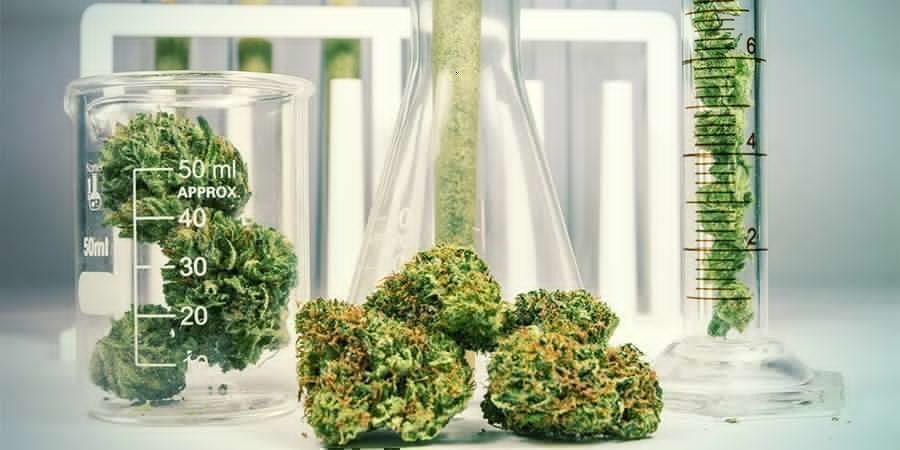
As you now know, there’s much more to cannabis than cannabinoids. The fine-smelling flowers of this plant possess hundreds of unique chemicals, all of which exert their own distinct effects. Although science has gone to great lengths to determine how they act in isolation, the power of full-spectrum extracts and the entourage effect seem to vouch for a "whole-plant" approach to holistic cannabis use going forwards. As research continues to ramp up in this regard, we’ll have greater assurance of the benefits of all of cannabis’ illustrious compounds.
- (n.d.). Flavonoids: Antioxidants Help the Mind - https://www.psychologytoday.com
- Ethan B Russo. (2011, August). Taming THC: potential cannabis synergy and phytocannabinoid-terpenoid entourage effects - https://www.ncbi.nlm.nih.gov
- Flores-Sanchez, Isvett Josefina, Verpoorte, & Robert. (2008, October). Secondary metabolism in cannabis | SpringerLink - https://link.springer.com
- Kumar, Vinay, Suman, Upsana, Rubal, Yadav, & Sudesh Kumar. (2018). Flavonoid Secondary Metabolite: Biosynthesis and Role in Growth and Development in Plants | SpringerLink - https://link.springer.com
- Russo EB, & Marcu J. (2017). Cannabis Pharmacology: The Usual Suspects and a Few Promising Leads - PubMed - https://pubmed.ncbi.nlm.nih.gov
- Russo EB, & Marcu J. (2017). Cannabis Pharmacology: The Usual Suspects and a Few Promising Leads - PubMed - https://pubmed.ncbi.nlm.nih.gov
- Russo EB, & Marcu J. (2017). Cannabis Pharmacology: The Usual Suspects and a Few Promising Leads - PubMed - https://pubmed.ncbi.nlm.nih.gov
-
 6 min
9 April, 2024
What Is The Entourage Effect?
A product of the 1990s, the theory of the entourage effect is arguably one of the hottest topics of discussion in the cannabis world. Click here for an overview of the entourage effect and what...
6 min
9 April, 2024
What Is The Entourage Effect?
A product of the 1990s, the theory of the entourage effect is arguably one of the hottest topics of discussion in the cannabis world. Click here for an overview of the entourage effect and what...
-
 5 min
8 August, 2023
CBD Oil - Your Ultimate Guide
There are a plethora of CBD oils out there. Here, we look at everything you need to know when buying CBD oil online.
5 min
8 August, 2023
CBD Oil - Your Ultimate Guide
There are a plethora of CBD oils out there. Here, we look at everything you need to know when buying CBD oil online.
-
 5 min
19 January, 2021
Top 3 Cannabis Strains By Terpenes
Do you know your pinene from your linalool? How about your myrcene from your limonene? Sure, terpenes are responsible for the tastes and smells of weed, but they also directly influence the effects...
5 min
19 January, 2021
Top 3 Cannabis Strains By Terpenes
Do you know your pinene from your linalool? How about your myrcene from your limonene? Sure, terpenes are responsible for the tastes and smells of weed, but they also directly influence the effects...
-
 3 min
22 May, 2020
What Is Linalool And How Does It Interact With Cannabis?
The chemical constituents of cannabis don't begin and end with cannabinoids. Terpenes are another chemical class that displays some amazing potential. Linalool is one of these amazing terpenes.
3 min
22 May, 2020
What Is Linalool And How Does It Interact With Cannabis?
The chemical constituents of cannabis don't begin and end with cannabinoids. Terpenes are another chemical class that displays some amazing potential. Linalool is one of these amazing terpenes.
-
 2 min
13 June, 2019
What Are Flavonoids?
Flavonoids play many roles in plant development; colour in flowers to attract insects for pollination, UV filtration, nitrogen fixation, and pest and fungi prevention. In the case of cannabis,...
2 min
13 June, 2019
What Are Flavonoids?
Flavonoids play many roles in plant development; colour in flowers to attract insects for pollination, UV filtration, nitrogen fixation, and pest and fungi prevention. In the case of cannabis,...
-
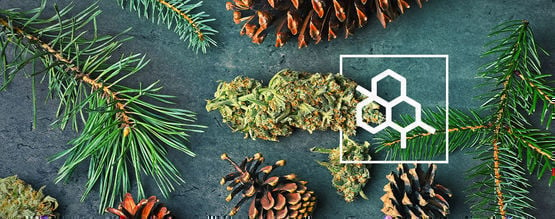 4 min
30 May, 2018
Everything You Need To Know About Terpenes
If terpenes and terpenoids sound the same to you, that's because, for the most part, they are. But there is a small difference between these two compounds; terpenes are pure hydrocarbons....
4 min
30 May, 2018
Everything You Need To Know About Terpenes
If terpenes and terpenoids sound the same to you, that's because, for the most part, they are. But there is a small difference between these two compounds; terpenes are pure hydrocarbons....











 United States
United States

